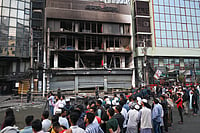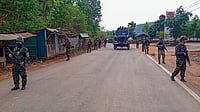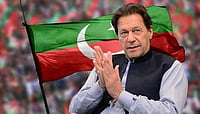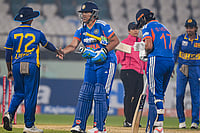- CPL exam to be outsourced; should be held every fortnight, not twice a year
- Physics and Maths at 10+2 level should be compulsory for aspirants
- CPL licence should be valid for at least ten years, instead of just two years
- Expired licence holders should sit for a written exam to renew it
***
The three hitherto untouched bastions of Indian civil aviation sector—pilot licensing requirements, aircraft manufacturing and the Aircraft Act, 1934, will become a part of the 'open sky' policies being pursued by governments in the past few years. On Thursday (June 22), the cabinet committee on economic affairs proposed several changes to the Act, which will will give more powers to the DGCA, grant licenses to people engaged in air traffic control to improve regulation, and monitor foreign registered aircraft flying over the Indian skies.
But this is just a beginning. For the committee, which was formed in August 2005 and headed by M.K. Kaw, former secretary in the civil aviation ministry, has given 276 recommendations, including the above changes in the Aircraft Act. In addition, "we want pilot examination procedures, syllabus, licensing criteria, and specifications for renewal of pilot licences that adversely affect the availability of trained pilots to be overhauled," says Kaw in an exclusive interview with Outlook. He adds that the committee has asked the DGCA to take the lead and act as the 'catalyst' to ensure indigenous production of civil aircraft. More importantly, Kaw feels that all these recommendations are also likely to be accepted by the civil aviation ministry within two months.
Domestic airlines have been battling a shortage of pilots due to increase in the number of flights and rising demand. However, Kaw feels the problem lies with the licensing procedures, under which "a vast majority of Indian pilots are just sitting idle and waiting to complete the lengthy process of licence renewal." Therefore, the committee said that the commercial pilot licence (CPL) and the private pilot licence (PPL) should be valid for at least 10 years, compared to the current practice where they have to be renewed once every two years. It wants the pilots' retirement age to go up from 62 to 65 years. To deal with lapsed licences, Kaw proposed there shouldn't be a written exam—mandatory now—for licences that have expired less than two years ago, and a single composite exam on relevant subjects should be required for those that have expired 3-5 years ago.
The examination itself, feels Kaw, should be outsourced to an external body, which should be certified and monitored by the DGCA. He has suggested that the exam, instead of being held once or twice a year, should be held every fortnight on a predetermined date and in an online format. Kaw also wants the current requirement that aspirants must have studied physics and maths at the 10+2 level should not be compulsory for the CPL exam. By no means relenting on reducing the standards of the pilots, the committee has recommended that the minimum pass percentage marks should be increased from 70 to 80 per cent.
The committee claimed that it had uncovered malpractices in the manner in which the communications ministry conducts the mandatory flight radio telephony operator (FRTO) licence exam, which has to be cleared by all CPL aspirants. As the ministry was failing most applicants, pilots were forced to either go to the UK and get an FRTO licence there, or pay for the UK-based instructors to come to India to grant or renew their licences. "Hence, we have suggested that the exam be brought under the DGCA's purview," says Kaw.
He also thinks that a restructured DGCA should promote indigenous manufacture of civil aircraft. "In the late '90s, I had constituted a committee on the issue which did not take off as then the sector had not seen the boom that it's seeing now. The time is ripe today and we must encourage local manufacturing capabilities," he explains. Hopefully, the domestic industry will take off in the future, as will more flights that are stuck due to shortage of pilots.






















